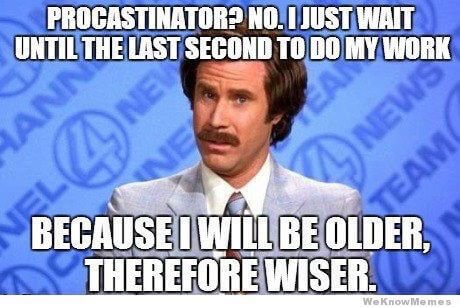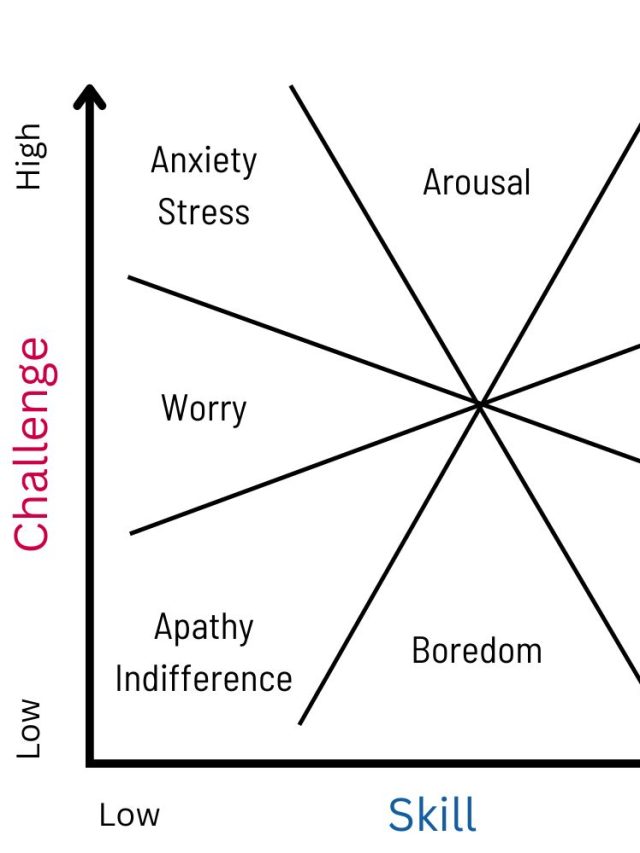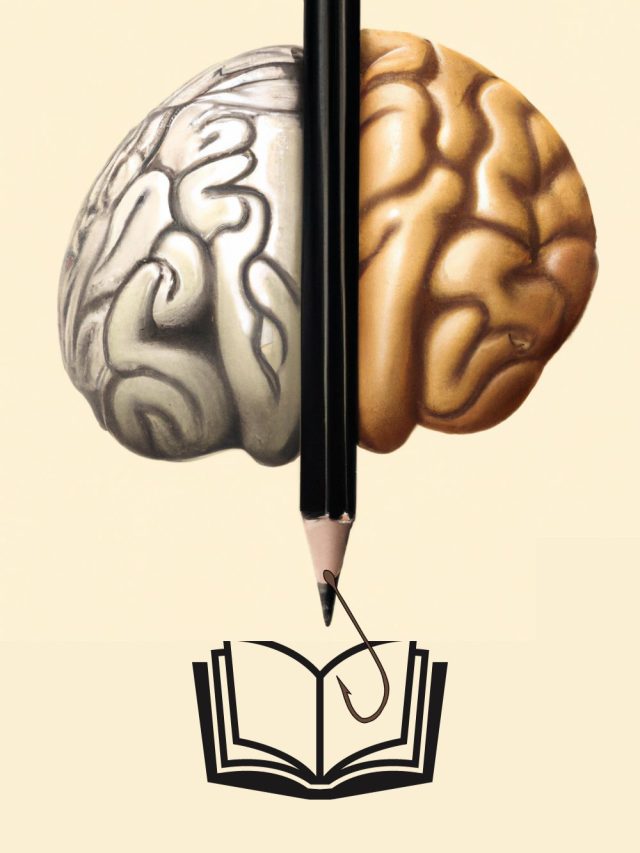Procrastination – the act of delaying something important – has the potential to cause anxiety, lower performance, reduce productivity, and hamper progress. At the very least, that’s what the typical idea of procrastination is. People delay activities like studying, work-reports, appointments, and confrontations which cause them distress and engage in more pleasant and gratifying activities like hanging out with friends, playing games, and even sleeping to improve their short-term mood. But, procrastination has a positive, advantageous side – research shows that some aspects of procrastination improve creativity, productivity, and academic performance.
Instead of seeing procrastination as a problem of time-management, discipline, laziness, or willpower, research unequivocally shows that procrastination is a problem of emotional regulation. Researchers call procrastination a self-handicapping and dysfunctional behavior. However, that is not the complete picture. Not all procrastination is self-defeating and a disadvantage. There is a good form of procrastination.
Active procrastination may improve creativity & productivity even though active procrastinators procrastinate as much as passive p-nators. They purposefully delay work which builds pressure to yield results. Share on XCharacteristics of active and passive procrastination
Researchers have identified two types of procrastination – active and passive.
Angela Hsin Chun Chu & Jin Nam Choi propose[1] that active procrastination can lead to desirable outcomes and passive procrastination can lead to undesirable outcomes. Active procrastination means you choose to delay working on a task because you like to work under pressure and that lets you perform better.
Passive procrastinators are often crippled by indecision and an inability to self-regulate – that gets in the way of completing a task. For traditional (passive) procrastinators, failing to begin work is further loaded by anxiety which causes additional stress and inaction. However, active procrastinators purposefully delay a task because they believe that they perform better under pressure and they can use it to their advantage. But just having this belief is not enough.
A nuanced difference between active and passive procrastination is that passive procrastinators delay a task even after deciding to do it but active procrastinators explicitly decide to delay a task and do it when the time comes.
Active procrastination has 4 key dimensions[2]:
- Preference for time pressure – Active procrastinators are usually not frustrated with deadlines and they do not lose their ability to concentrate under time-pressure. They often like working under pressure.
- Intentional decision to put off tasks – Active procrastinators intentionally delay a task to make better use of their time and increase their motivation. They feel a sense of autonomy, volition, and agency in their decision.
- Ability to meet deadlines – Active procrastinators, unlike passive procrastinators, are not always running late and behind schedule. They often succeed in finishing the tasks on time.
- Outcome satisfaction & beliefs – Active procrastinators tend to not be satisfied with the outcome when they work slowly and finish the work long before the deadline. They are more likely to disagree with the statement “I don’t do well if I have to rush through things.”
Some would argue that this really isn’t a form of procrastination, mostly because we have taken the liberty to implicitly add “negative consequences” and “unpleasantness” to the very definition of procrastination – delaying something that must be done, often because it is unpleasant and boring.
Another way to look at active procrastination is – an intentional, self-motivated delay in starting a task to create better, satisfying results.
We are essentially looking at a self-regulation strategy to improve productivity which superficially appears like procrastination but differs in important core aspects. As of now, research does not clearly suggest if this is a trainable strategy. It may only reflect personal temperaments, needs, and preferences. That means it is not clear if switching gears and suddenly becoming active can cancel-out your passive procrastination and improve productivity – both forms can co-exist in a person.
There are other types of procrastination that are defined for their clinical applications. This article won’t focus on those because the studies in this article cannot be fully generalized for a clinical setting.
- Chronic pathological procrastination: Those who have a high tendency to delay important work at a habitual, semi-permanent personality level.
- Symptomatic procrastination: Those who suffer from an increased level of procrastination which is a symptom of a psychological disorder like ADHD or Depression.
The relationship between procrastination, creativity, and productivity
A new study[3] published in Personality and Individual differences authored by Shabnam Zanjani, Dilek G.Yunlu, and Joan N. Shapiro Beigh shows that procrastination may play a role in creative thinking. And both active and passive procrastination can affect creativity through different mechanisms.
Shabnam and colleagues recruited 631 participants across 2 studies and measured their active procrastination tendencies, passive procrastination tendencies, emotional stability, and conscientiousness (a personality trait related to discipline & organization) to understand their self-reported creativity and expert-rated creativity (3 experts judged how creatively they caption a cartoon).
Their primary findings suggest that active and passive procrastination creates differences in both self-reported creativity and expert-rated creativity.
Passive procrastinators reported low creativity but experts judged their cartoon-captions as creative. Researchers think that passive procrastinators believe they are less creative but their idle-automatic mind is conducive to creative thinking. When people passively procrastinate, they are usually not in control of their decisions, focus, and behavior. Their mind wanders, attention moves in unguided ways and this wandering enables access to wide-divergent ideas and associations. Mind-wandering and divergent thinking is closely related to creative thinking because that mental state is not limited by rigid/logical/simple thought processes. This “unconscious” automatic mental state may facilitate creativity for passive procrastinators.
They say, “As passive procrastinators tend to be less focused, less determined to accomplish particular outcomes, they may be able to come up with more divergent, creative ideas.”
However, they found a different mechanism for active procrastinators. Surprisingly, those who believed that they are satisfied with their work outcome after deliberate procrastination had low expert-rated creativity scores. Their study forced participants to do the creativity task there and then during online surveys and researchers think that forcing them did not allow them to reap the benefits of thought incubation. Active procrastinators may delay their work so their thoughts go through an unconscious process which yields better results. The unconscious process is similar to that of a passive procrastinator’s default state.
Active procrastinator’s preference for time pressure positively correlated with both self-reported and expert-rated creativity. This particular bit of evidence has a strong implication – those who delay their work to create better results may be functioning at their self-assessed best.

A qualifying bit of evidence comes from another aspect of this research – emotional stability had a negative effect on the positive relationship between preference for pressure and creativity. Emotionally stable people did worse on creativity than neurotic people (generally anxious people) as the preference for pressure increased. Researchers argue that neuroticism or worry & anxiety prepares a person for generating better work-output. Anxiety and high stakes can help a person optimize their mental resources and strategy to provide the best results. Moderate anxiety and arousal can result in maximum output. However, this does not extend toward very high neuroticism as emotional dysfunction is linked to passive procrastination. More evidence might uncover a possible non-linear relationship between emotional stability (vs. neuroticism) and procrastination in general.
Unlike emotional stability, conscientiousness improved active procrastinator’s ability to meet deadlines. In a sense, emotional instability (worry and anxiety) coupled with a behavioral ability to meet deadlines might maximize the benefit of active procrastination for those who prefer time pressure.
Not all procrastinators fit into only one of the 2 categories. There is only a weak negative correlation between active and passive procrastination which suggests that there may be a global tendency to be active or passive but a single person may demonstrate both in different contexts.
Researchers put all of these findings in the context of the forgetting fixation theory which describes how humans can tap into a flexible network of ideas and associations by purposefully delaying a task (essentially distancing it) which prevents fixating on simple, unoriginal, and obvious thoughts. So instead of un-creative ideas dominating the mind, incubation allows the brain to freely move around to explore creative ideas. Such mind wandering is a part of a larger, more powerful framework of creative thinking called the Construal Level Theory.
On a slightly unrelated note – experts are at risk of being uncreative because repeated experiences limit their automatic thinking to things they already know instead of generating novel, creative ideas. That’s called the Einstellung Effect.
Coming back to active and passive procrastination, not everything about procrastination is bad. Be it active or passive, some underlying processes may have value in creative productivity. Shabnam and colleagues extend other important research findings which show that some aspects of procrastination can improve performance on the whole.
In an earlier study[4], researchers compared passive procrastinators, active procrastinators, and non-procrastinators on various dimensions like grade-point average (GPA), life-satisfaction, academic performance, self-efficacy (belief in one’s abilities), perceived control over time, stress, motivation, personality, psychological coping, etc. They found that active procrastinators are more like non-procrastinators and both are significantly different from passive procrastinators.
Contrary to prevailing beliefs about procrastinators, active procrastinators delayed their work just as much as passive procrastinators but the former group had a better GPA, higher life-satisfaction, more purposeful use of time, and higher self-efficacy. Of all measured variables among the 3 groups, active procrastinators had the highest self-efficacy which suggests they strongly believe in their ability to successfully complete their work and have the confidence that their “process” works. On the other hand, passive procrastinators fared poorly on most counts.
Their study shows us that active procrastinators do genuinely procrastinate but their academic productivity and life-outcomes are similar to those who rarely engage in any form of procrastination.
A different approach to procrastination is its relationship with well-being. Researchers found[5] that high psychological well-being predicts more of active procrastination and low psychological well-being predicts passive procrastination. They also provide evidence suggesting that active and passive procrastination are 2 different tendencies. In the simplest sense, traditional (passive) procrastinators tend to have negative beliefs and self-handicapping anxiety which prevents work and that is associated with low psychological well-being. Researchers Emily Anne Habelrih & Richard Edward Hicks speculate that a low sense of purpose reduces the feeling of autonomy, agency, and activeness in decision making which goes against actively delaying work for growth. All of those factors correlate with low well-being.
Deliberate procrastination involves planning and judgment calls, so it’s not surprising that a study showed[6] that students who actively procrastinate to manage their time and prefer to work under pressure perform better in academics.
When procrastinating, a number of people engage in other activities. The passive ones might focus more on mood-improving, enjoyable activities and the active ones might do other productive work. The active ones are likely to use their time to do other important tasks – tasks that were already purposefully procrastinated because they wanted to use their time more efficiently. In a sense, this is productive procrastination.
Researchers analyzed[7] over 500,000 To-Do tasks and found that keeping yourself busy after missing a deadline can reduce future procrastination and increase subsequent productivity. They argue that keeping busy reduces the negative emotional impact of failing to complete work. Without feeling busy, the negative emotional impact would continue fueling more procrastination. However, keeping oneself busy may distract a person from dealing with the negative emotions created by missing a deadline or failing to complete a task.
In this context, initial procrastination leads to more productivity when a person is busy (or feels busy). Being busy could be an effective form of active procrastination which increases productivity – because realistically, most people are likely to procrastinate some work at the cost of other work.
These findings have strong implications for employees who may be procrastinating:
- Making people moderately busy after missing a deadline could help overall productivity
- Letting active procrastinators procrastinate can improve their creative output
- Asking passive procrastinators to immediately provide a result can maximize their output
Or like some managers say, “wait until there is nothing left to manage.”
Summary:
Active procrastination may improve creativity and productivity even though active procrastinators procrastinate as much as passive procrastinators. They prefer time pressure, delay work on purpose, can meet deadlines, and believe pressure yields better results.
Active procrastination may be a “good” form of procrastination and passive procrastination may be a “bad” form of procrastination.
P.S. The idea that purposeful delay can improve productivity resonates with a pseudo-law called the Parkinson’s Law[8] – Work expands or contracts to fill the time available to complete it.
Sources
[2]: https://www.tandfonline.com/doi/abs/10.3200/SOCP.149.2.195-212
[3]: https://www.sciencedirect.com/science/article/abs/pii/S0191886919305720
[4]: https://www.tandfonline.com/doi/abs/10.3200/SOCP.145.3.245-264
[5]: http://www.ccsenet.org/journal/index.php/ijps/article/view/52163
[6]: https://www.researchgate.net/profile/Sowon_Kim2/publication/311676239_Procrastination_personality_traits_and_academic_performance_When_active_and_passive_procrastination_tell_a_different_story/links/59eb12940f7e9bfdeb6ce384/Procrastination-personality-traits-and-academic-performance-When-active-and-passive-procrastination-tell-a-different-story.pdf
[7]: https://www0.gsb.columbia.edu/mygsb/faculty/research/pubfiles/5892/Procrastination%20and%20Being%20Busy%20-%20Final.pdf
[8]: https://www.sciencedirect.com/science/article/abs/pii/0022103167900297

Hey! Thank you for reading; hope you enjoyed the article. I run Cognition Today to paint a holistic picture of psychology. My content here is referenced and featured in NY Times, Forbes, CNET, Entrepreneur, Lifehacker, about 15 books, academic courses, and 100s of research papers.
I’m a full-time psychology SME consultant and I work part-time with Myelin, an EdTech company. I’m also currently an overtime impostor in the AI industry. I’m attempting (mostly failing) to solve AI’s contextual awareness problem from the cognitive perspective.
I’ve studied at NIMHANS Bangalore (positive psychology), Savitribai Phule Pune University (clinical psychology), Fergusson College (BA psych), and affiliated with IIM Ahmedabad (marketing psychology).
I’m based in Pune, India. Love Sci-fi, horror media; Love rock, metal, synthwave, and K-pop music; can’t whistle; can play 2 guitars at a time.











Excellent article, thank you!
This was the first time that I came across the concept of active / passive procrastination, and I am thoroughly relieved because as an active procrastinator (I know now!), most other articles decrying procrastination made no sense to me.
Unlike many other articles I’ve read on the topic, this article was markedly devoid of bias in its commentary, and I thank you for it!
Thank you very much Nikhil, I’m glad to hear that you found something that made sense to you! I do agree – active procrastination, or any form of strategic delay, is not popularly written about, and procrastination is just labeled as an unconditionally self-damaging process. Thanks for the acknowledging minimal bias in the article:) That means a lot!